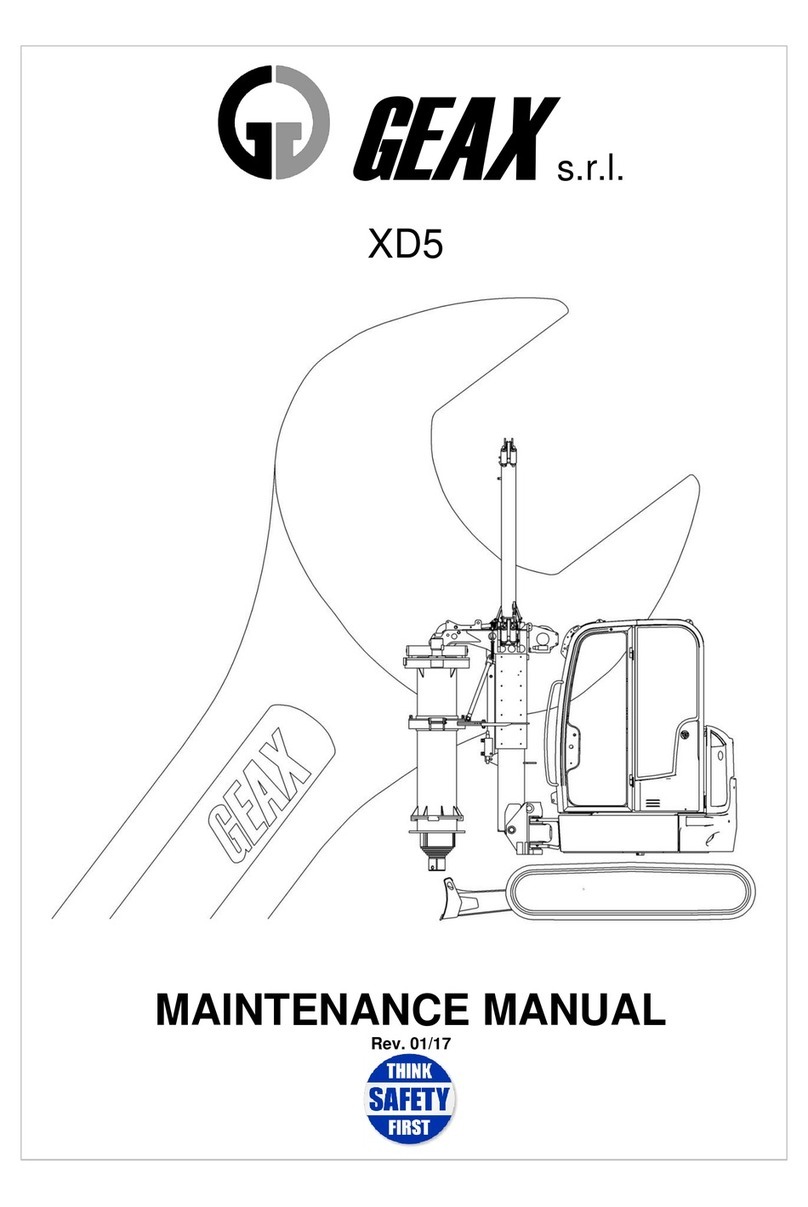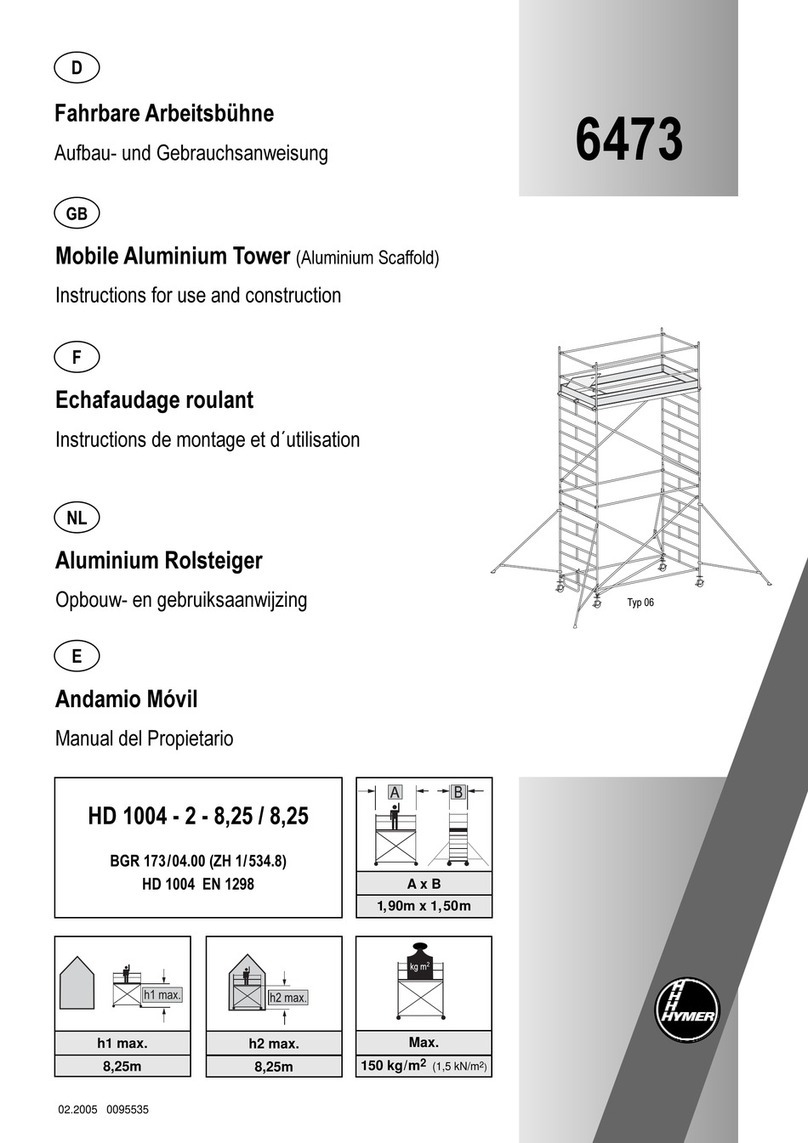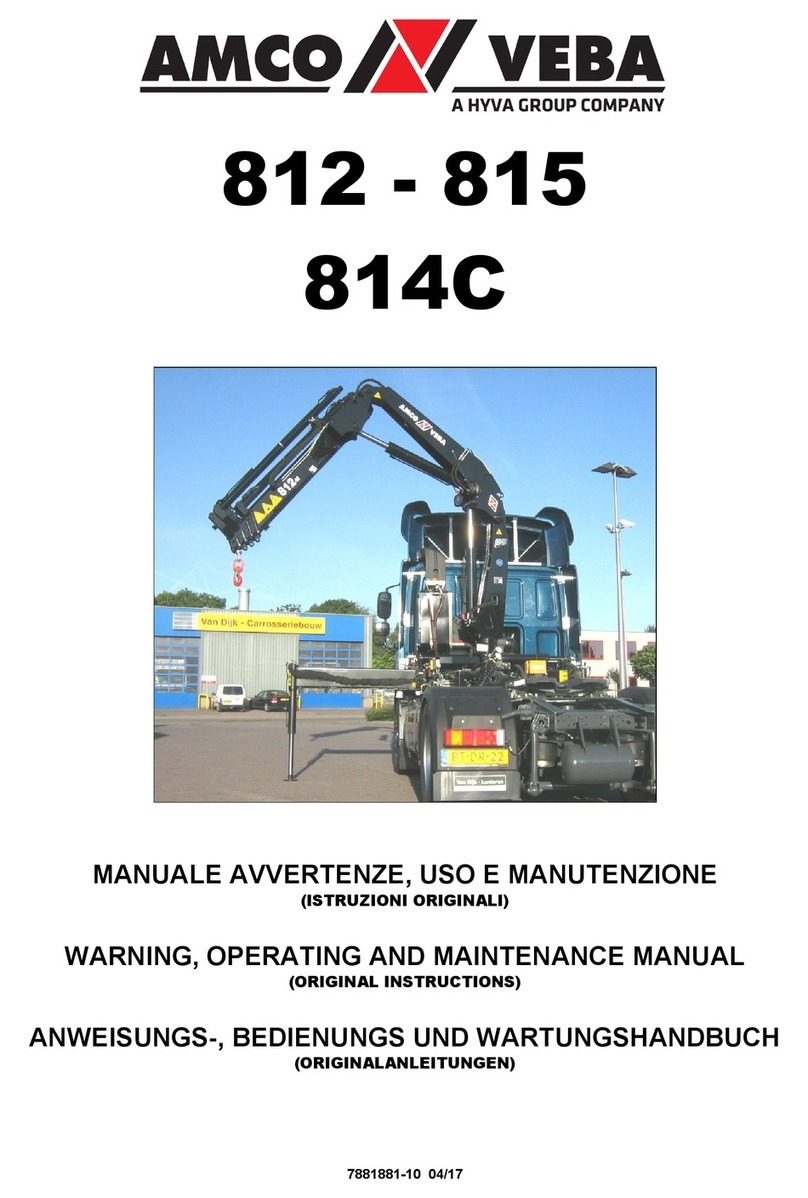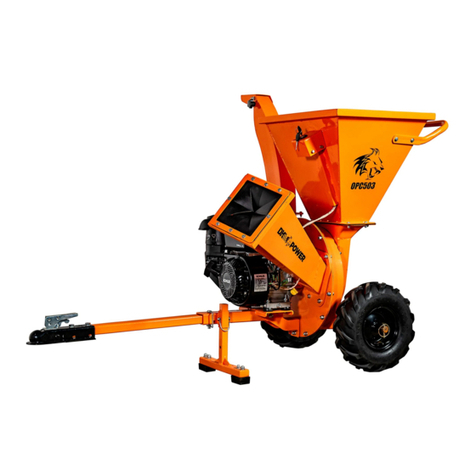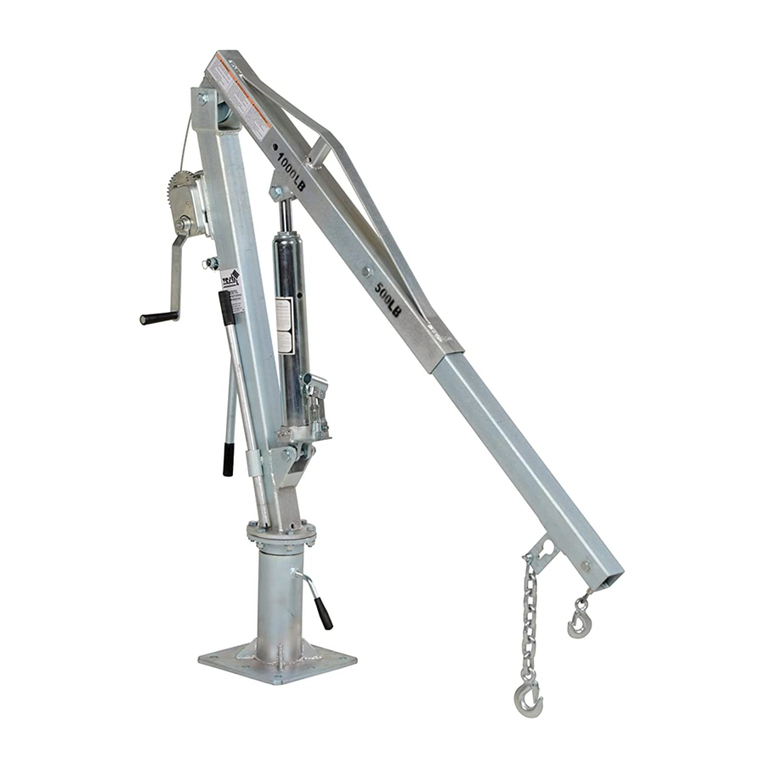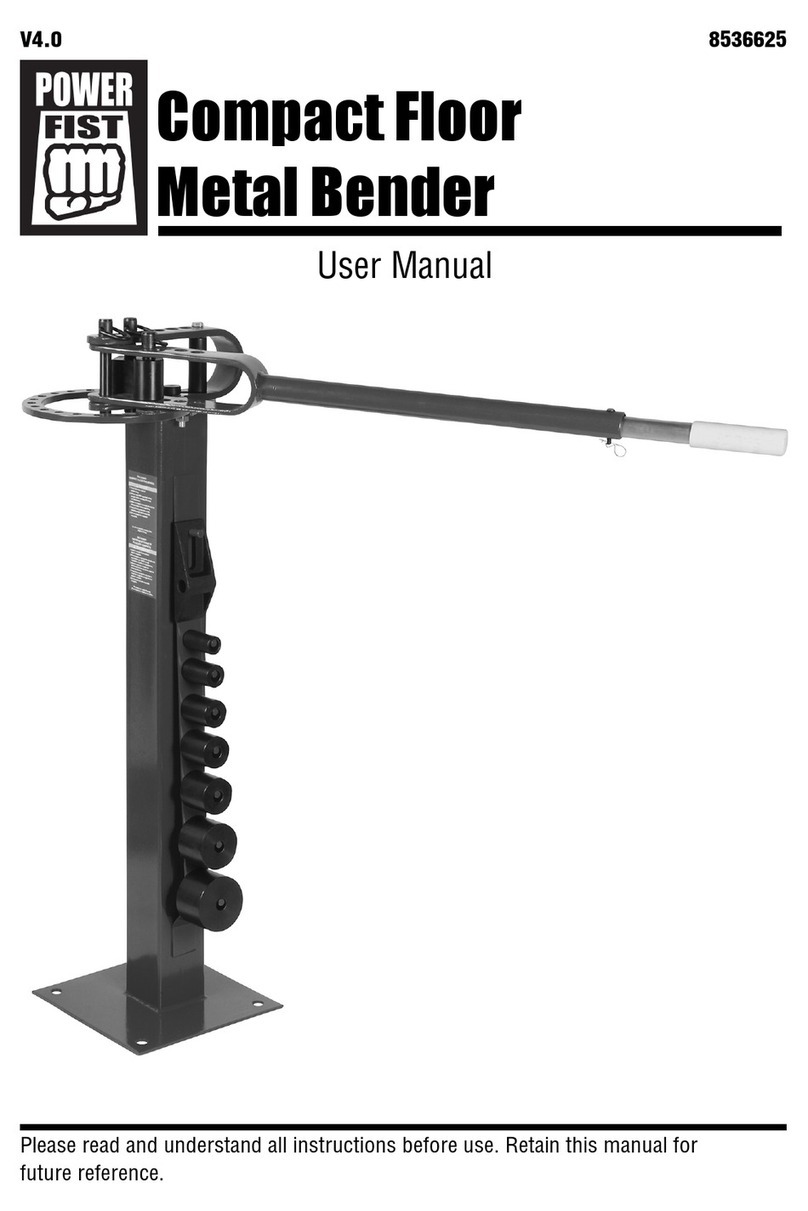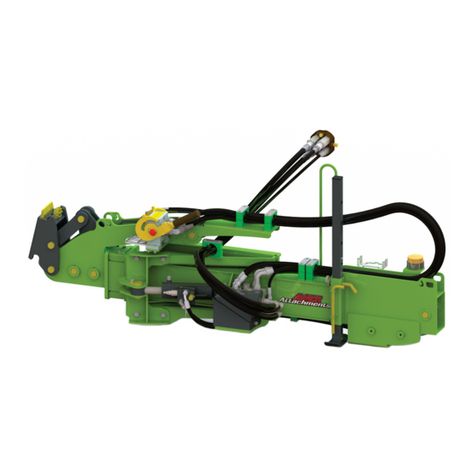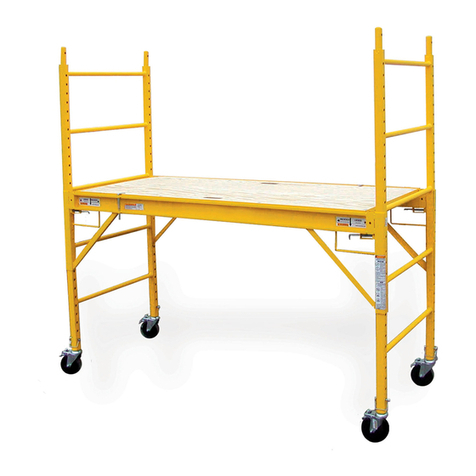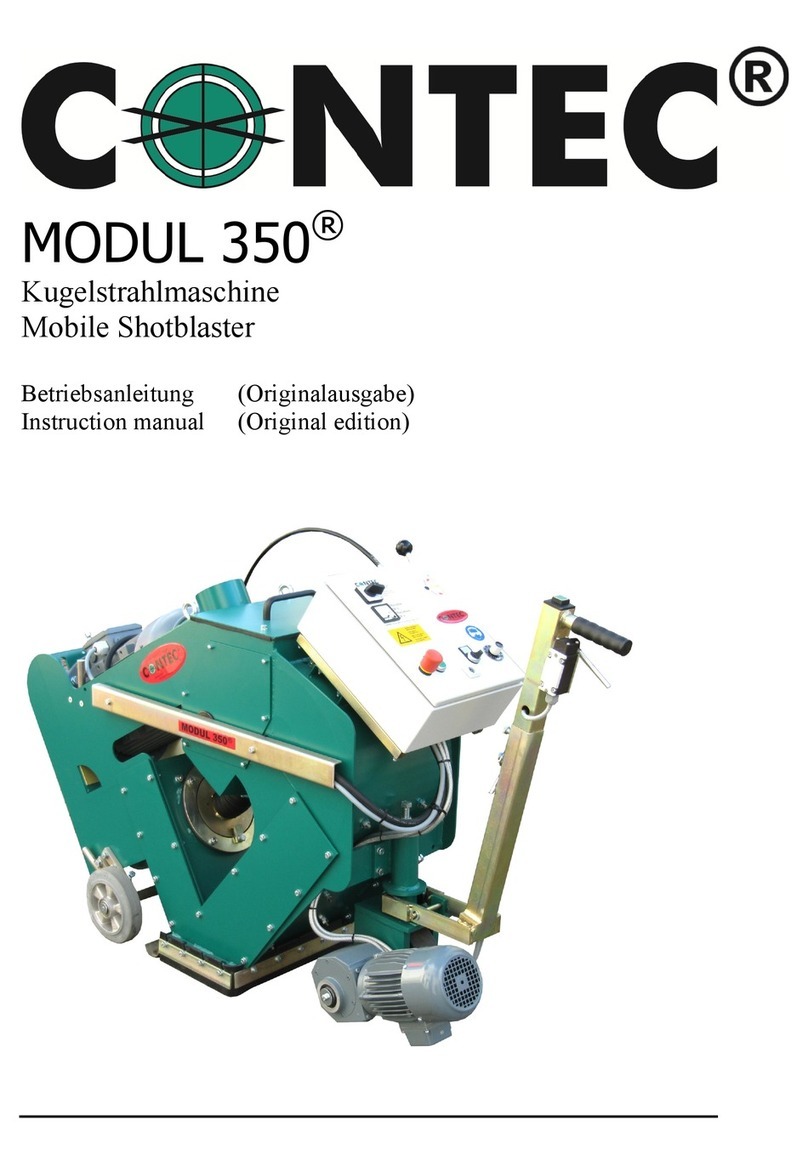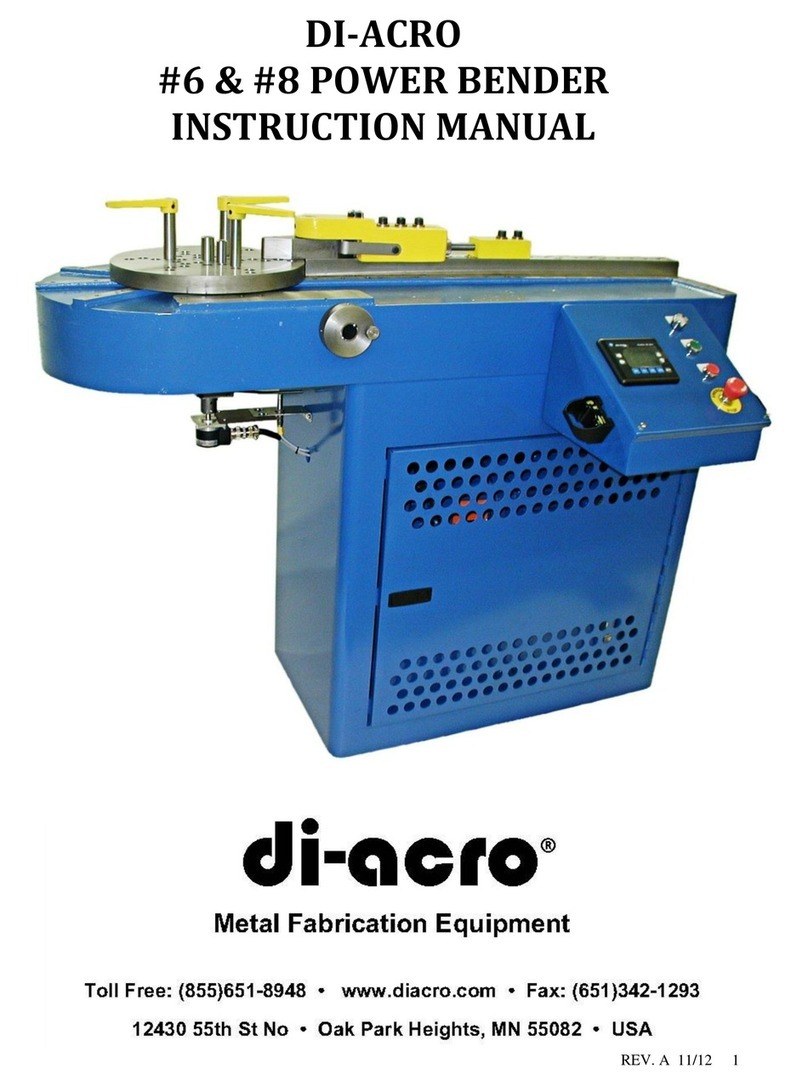Geax XD5 Use and care manual

OPERATION AND SAFETY
MANUAL
Rev.01/17
GEAX
s.r.l.
XD5J20

Serial number :
020J005X
GEAX
s.r.l via Campoceraso,13
60027 Osimo (AN) ITALY
Tel +39 0717131953
Fax +39 071715199
www.geax.it info@geax.it

GEAX
s.r.l Chapter 1
OPERATOR TRAINING
1
Chapter 1
OPERATOR TRAINING
1.1 Foreword
This manual provides information to operators on the features and operation
of the XD5 track-mounted drilling rig. It also describes the hazards relating to
the rig's operation and what to do to minimize the risks. The purpose of this
manual is to prepare safety-minded operators; accordingly, as well as listing
the required procedures, it is designed to raise the reader’s awareness on the
importance of working safely. Our is that it will contribute to eliminate
superficial, careless and uncritically repetitive behaviours, which are
ultimately the main causes of jobsite accidents.
1.2 Physical and mental conditions of operators
Operators must have past experience in the sector, be familiar with the
general safety rules and have proven their attitude to recognize and handle
potentially dangerous situations. Before using the (XD5
1
) drilling rig for the
first time, new operators must read this OPERATION AND SAFETY MANUAL
completely. Once they are sure they have understood it, they can proceed to
use the rig with the assistance of an experienced colleague. The introductory
period should last as long as necessary, depending on the operator’s past
experience.
At the time of starting a work shift, operators must be in good health and in
sound physical and mental conditions. Their blood alcohol content must be
equal zero.
1.3 Operators' equipment
Operators must wear the protective equipment required by jobsite safety
regulations and relating to the specific activities carried out, e.g.:
•type-approved helmet
•type-approved safety shoes
•comfortable, appropriately-sized work overalls
•close-fitting, type-approved protective gloves
•type-approved safety glasses
•type-approved earplugs or earmuffs
•protective face masks (when required by working conditions)
1
Make sure the serial number on the drilling rig is the same as the number printed in the manual.

GEAX
s.r.l Chapter 1
OPERATOR TRAINING
2
All protective clothing and devices must be in good conditions and clean
enough not to affect their protection capacity or wearing comfort. In particular,
heavy clothing must be used as required by the temperature on the jobsite:
thermal comfort contributes to keeping the attention threshold high. Overalls
should have no loose flaps that might hamper the operation of controls or get
caught on edges or rotating shafts. Gloves are necessary to protect the
hands from cuts and abrasions that can be produced when gripping wire
ropes or metal parts, but they should not reduce finger mobility nor get caught
on edges or on the controls. Avoid wearing rings or jewellery.
1.4 Safety signs
A poster should be placed in the jobsite with safety signs reminding to wear
the protective devices described above, as required by law. Figure 1.4.1
shows a few of these mandatory signs.
Fig. 1.4.1

GEAX
s.r.l Chapter 1
OPERATOR TRAINING
3
1.5 Symbols used in this manual
Danger (or other) signs are used at various points in the manual to call the reader’s
attention to issues regarding potentially dangerous activities.
Situation, procedure, context or other factor that can lead to increased risk.
Situation, procedure, context or other factor that can lead to increased risk of
electrocution.
Situation, procedure, context or other factor that can lead to increased risk of
getting caught and dragged by rotating parts.
Situation, procedure, context or other factor that can lead to increased risk of
fire.
Situation, procedure, context or other factor that can lead to increased risk of
scalding on parts that become hot during operation.
Situation, procedure, context or other factor that can lead to increased risk of
intoxication or poisoning by harmful substances.
Situation, procedure, context or other factor that can lead to increased risk of
intoxication or poisoning by harmful substances.
Situation, procedure, context or other factor that can lead to increased risk of
burning by corrosive substances.
Situation, procedure, context or other factor that can lead to increased risk of
loss of balance and falling.
Situation, procedure, context or other factor that can lead to increased risk of
being hit by the machine in movement.
Situation, procedure, context or other factor that can lead to increased risk of
being hit by the machine in movement.
Situation, procedure, context or other factor that can lead to increased risk of
crushing hands.
Situation, procedure, context or other factor that can lead to increased risk of
being hit by suspended loads falling down.
Improving safety measures is a never-ending task; should you encounter a potentially
hazardous situation that is not adequately covered in this manual, please let us know.

GEAX
s.r.l. Chapter 2
TRANPORTING THE DRILLING RIG
1
Chapter 2
TRANSPORTING THE DRILLING RIG
2.1 Before/after transporting the drilling rig
2.1.1 Removing the tool
If the rig is standing on farmland, proceed as follows:
•Lower the tool to the ground and make a small drilling rotation to ensure
that the tool remains stable once it is detached from the kelly bar.
•Remove the safety catch and pull out the pin.
•Raise the kelly bar.
•Move the tool away.
If the rig is standing on a paved surface, proceed as follows:
•Prepare and place on the surface some wood thicknesses;
•Place the tool on the blocks of wood so that the support is stable;
•Remove the safety catch and pull out the pin.
•Raise the kelly bar.
•Move the tool away.

GEAX
s.r.l. Chapter 2
TRANPORTING THE DRILLING RIG
2
2.1.2 Removing the tubular structure for the auxiliary winch
The structure for the auxiliary winch must be folded according to the
following procedure:
•Place the mast to the necessary height to allow to secure the support
rod at both ends;
•release the rope from the eyebolt fig.2.1.2.1;
•Mount the rod starting from the top bolt fig.2.1.2.2;
•tighten the lock nuts;
fig.2.1.2.1 fig.2.1.2.2

GEAX
s.r.l. Chapter 2
TRANPORTING THE DRILLING RIG
3
•Remove the safety catch and pull the top pin fig.2.1.2.3;
fig.2.1.2.3
•Operators at a safe distance fig.2.1.2.4;
•Slowly raise the mast, at the same time the structure of the 2nd winch
will start to rotate lowering fig.2.1.2.4;
•Stop the movement of the mast when the lower part is vertical aligned
to the mast;
fig.2.1.2.4 fig.2.1.2.5
•The operator must slightly raise the structure to remove the load on the
rod fig.2.1.2.6 and taking off the bolts beginning with the lower fig.2.1.2.7;

GEAX
s.r.l. Chapter 2
TRANPORTING THE DRILLING RIG
4
fig.2.1.2.6 fig.2.1.2.7
•hook the winch rope to the appropriate eyebolt;
•lock the oscillatory movements of the structure of the 2nd winch with
adequate safety strap belt.
The bolts must be replaced in the seats with their nuts and the pin with the
safety catch

GEAX
s.r.l. Chapter 2
TRANPORTING THE DRILLING RIG
5
2.1.3 Installation of the tubular structure for the auxiliary winch
The structure for the auxiliary winch must be positioned according to
the following procedure:
•Place the mast to the necessary height to allow to secure the support
rod at both ends;
•release the rope from the eyebolt;
•The operator must slightly raise the structure to position fig.2.1.3.2 and
allow the mounting of the handling rod threading the bolts starting from
the upper fig.2.1.3.3;
•tighten the lock nuts;
fifg2.1.3.2 fig. 2.1.3.3
•operators at a safe distance fig.2.1.3.4;
•Slowly lower the mast, at the same time the structure of the 2nd winch
will start to rotate rising fig.2.1.3.4;
•stop the movement of the mast when the hole in the structure fits with
the one on the mast fig.2.1.3.5;

GEAX
s.r.l. Chapter 2
TRANPORTING THE DRILLING RIG
6
fig.2.1.3.4 fig.2.1.3.5
•Insert the locking pin with its safety catch fig.2.1.3.6;
fig.2.1.3.6
•Remove the nuts and remove the shaft by removing the bolts beginning
with the lower fig.2.1.3.6.

GEAX
s.r.l. Chapter 2
TRANPORTING THE DRILLING RIG
7
fig.2.1.3.6 fig.2.1.3.7
In work configuration, the auxiliary winch rope should always be
attached to the appropriate eyebolt fig.2.1.3.7.
2.1.4 Installing the tool
The steps are as follows:
•raise the kelly bar in order to leave enough space below for the tool;
•align axially the kelly bar to the tool joint;
•rotate the kelly bar until it reaches the correct mutual position of the
coupling;
•Slowly lower the kelly bar until it is seated in the coupling:
•insert the pin and insert the safety catch;
•raise the kelly bar.

GEAX
s.r.l. Chapter 2
TRANPORTING THE DRILLING RIG
8
2.2 Loading, unloading and anchoring the rig on a truck / semitrailer
2.2.1 Positioning the truck / semitrailer
The trailer must be placed on level ground, firm enough to allow
using the loading ramps and performing the manoeuvres required to
align the rig to the ramps. The climb must be straight and in line with
the trailer (see fig.2.2.2.1).
Make sure there are no obstacles or overhead cables inside the drilling rig’s
manoeuvring space (see fig. 2.3.1.1).
2.2.2 Loading and unloading
When loading or unloading the rig on/from the trailer, the rig’s
configuration must be as showed in fig. 2.2.2.2, i.e., with the tool
detached and the undercarriage extended.
Considering that the drilling machine is definitely closer than the truck, the
ramps must be carefully positioned at the right distance
fig.2.2.2.1 .
fig.2.2.2.1
The fig.2.2.2.2-3-4 show loading operation.
fig.2.2.2.2

GEAX
s.r.l. Chapter 2
TRANPORTING THE DRILLING RIG
9
fig.2.2.2.3
The fig. 2.2.2.3 and 2.2.2.6, in particular, show the approximate point where the
rig changes inclination when passing from the ramp to the deck or vice versa.
In this stage the rig should travel at its lowest speed so that the change
occurs as gently as possible.
Always keep perfect alignment with the ramps.
fig.2.2.2.4
fig.2.2.2.5
In the final position fig.2.2.2.4 or fig. 2.2.2.5 should be lowered both the rod and
the blade to the contact with the truck bed.

GEAX
s.r.l. Chapter 2
TRANPORTING THE DRILLING RIG
10
.The fig.2.2.2.6 show unloading operation.
fig.2.2.2.6
Always keep perfect alignment with the ramps.
Going down from the truck did not proceed as fig.2.2.2.7. This configuration is
less stable.
fig.2.2.2.7
To climb the slope use the ramps supplied, placing them so that their length
and rigidity are compatible with the rig's gradeability and weight. Place the
trailer on a sufficiently wide, flat area, free from overhead cables (power lines
or other) that might interfere with loading/unloading.
Making contact with power lines is particularly dangerous because (in
addition to the mechanical aspects described below) it can cause an
electric shock to persons who are touching metal parts (e.g., the trailer or the
drilling rig) and the ground at the same time. In case of contact with power
lines do not touch the vehicles involved (especially the trailer, as it has rubber
tires). If the cable remains in contact with the rig, the operator should stay
inside and await the intervention of the power company personnel. If the
operator tries to get off the rig there is a chance that he might come in contact
with the vehicle and the ground at the same time, receiving a dangerous
electric shock. The risk is greatest when the rig is on the trailer, because the

GEAX
s.r.l. Chapter 2
TRANPORTING THE DRILLING RIG
11
rubber tires provide insulation from the ground and allow very high voltages.
This risk remains even on the ground when the tracks are covered by
insulating material (rubber tracks).
Non-electric cables pose risks of a mechanical nature. They might be strong
enough to topple supporting structures before breaking, causing danger to
bystanders. After breaking, they might whip around violently as they release
the elastic energy accumulated.
During loading and unloading, persons on the ground should stay at
a safe distance.
2.2.3 Fastening
The drilling rig must be anchored to the semitrailer with strong stay wires
capable of preventing any movement.
2.3 Transportation
2.3.1 Configuration for transportation on truck / semitrailer
During transportation the drilling rig must be arranged in the
configuration shown in fig. 2.2.2.3 o 2.2.2.4. The kelly bar pin should
rest on the deck of the semitrailer in order to minimize the load on
the boom’s hydraulic cylinders and increase overall stability. The tool must be
detached. The undercarriage must be left extended. The engine must be
turned off and the key on the dashboard turned to OFF. The door (in cab
version) must be secured shut to avoid it opening during transportation.
Figure 8.4.2.1 shows the overall dimensions of the rig in its typical transport
configuration.
2.3.2 Centre of gravity
In the transport configuration the rig’s centre of gravity is located
approximately 40-50 cm further of the slewing ring axis.
2.3.3 Road transport
The truck / semitrailer must be adequately sized to carry the drilling rig, both
in terms of dimensions and load capacity. Make sure the rig is arranged
compatibly with the maximum allowable load of every axle.
Also, make sure that the planned route is large enough in width and height
(narrowings in the road, bridges, low overhead cables, traffic signs, etc.).
Check the capacity of any bridges along the route. The truck should proceed

GEAX
s.r.l. Chapter 2
TRANPORTING THE DRILLING RIG
12
at a speed that is compatible with the conditions of the road and such as to
not compromise the stability of the load at any time.

GEAX
s.r.l. Chapter 3
DRILLING RIG JOBSITE OPERATIONS
1
Chapter 3
DRILLING RIG JOBSITE OPERATIONS
3.1 Moving the rig in the jobsite
3.1.1 Pre-planning the route
Before moving the drilling rig in the jobsite you should survey (on
foot) the area where the rig is to be placed, and plan the path of
travel by which to get there. The ground along the route must be
firm enough to support the weight of the rig, with forward or lateral gradients
(which vary according to the rig's configuration) within the limits described
below. When moving in the jobsite, the tracks must be extended. The
operator must fasten the seatbelt.
•Maximum downward slope 5° (8% gradient) with cabin aligned to the
direction of travel , facing forward fig.3.1.1.1
fig.3.1.1.1
Drive the rig at a low, steady speed.
slope

GEAX
s.r.l. Chapter 3
DRILLING RIG JOBSITE OPERATIONS
2
•Maximum upward slope 12° (20% gradient) with cabin aligned with the
direction of travel, facing forward fig. 3.1.1.2.
fig.3.1.1.2
Climb the slope along the line of maximum gradient (<20%).
This will prevent the rig from tilting sideways.
When travelling in reverse, use the rear-view mirrors and check
both sides frequently. In case of poor visibility, stop the rig and
inspect the path from a better viewpoint. Keep the travelling
speed at minimum.
slope

GEAX
s.r.l. Chapter 3
DRILLING RIG JOBSITE OPERATIONS
3
•Maximum lateral slope 7° (12% gradient), with extended undercarriage
and cabin aligned with the direction of travel, (both directions); fig. 3.1.1.3
•Maximum lateral slope 3° (5% gradient) with close undercarriage and
cabin aligned with the direction of travel (both directions); to be used
only to cross narrow passages. fig. 3.1.1.3
fig.3.1.1.3
Drive the rig at a low, steady speed. The recommended gradient
limits must never be exceeded. If the rig is subjected to rapid
changes in inclination due to uneven ground while travelling, stop
the rig and change the configuration and/or route in favour of a
safer one.
When travelling in reverse, use the rear-view mirrors and check
both sides frequently. In case of poor visibility, stop the rig and
inspect the path from a better viewpoint.
slope
slope
Other manuals for XD5
1
Other Geax Construction Equipment manuals
